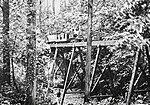Burley Hill
Borough of ErewashDerbyshire geography stubsHamlets in Derbyshire

Burley Hill is a hamlet in the Erewash district, in the county if Derbyshire, England. It is located one mile north of Allestree. Burley Hill was the location of a pottery in the 13th and 14th centuries and some of those pots are preserved in Derby Museum.
Excerpt from the Wikipedia article Burley Hill (License: CC BY-SA 3.0, Authors, Images).Burley Hill
Burley Hill, Amber Valley
Geographical coordinates (GPS) Address Nearby Places Show on map
Geographical coordinates (GPS)
| Latitude | Longitude |
|---|---|
| N 52.966 ° | E -1.479 ° |
Address
Burley Hill
Burley Hill
DE22 2ET Amber Valley
England, United Kingdom
Open on Google Maps










